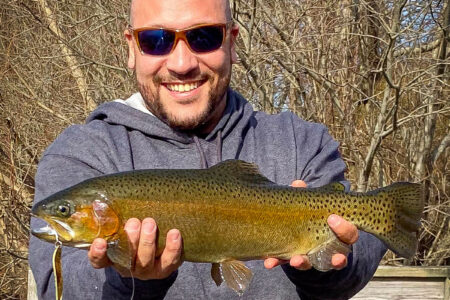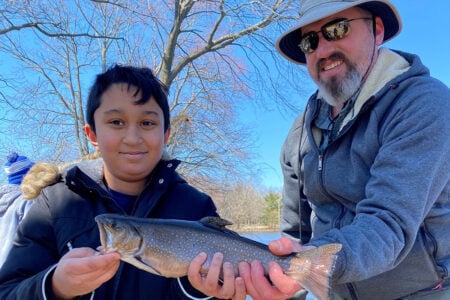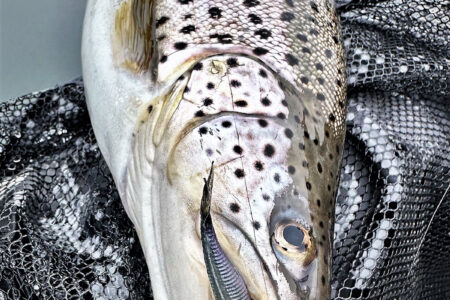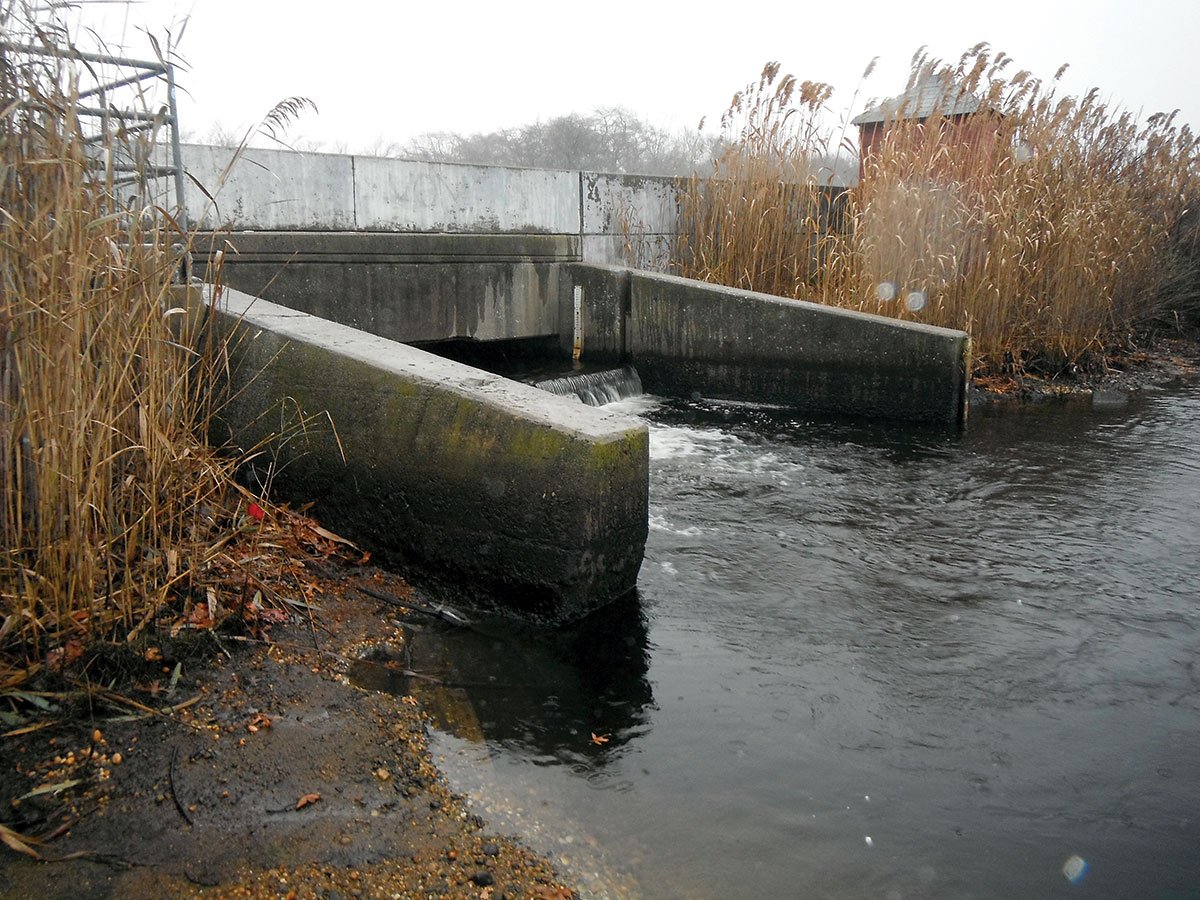
As winter settles in with its cold nights and shortened days, many anglers find their thoughts wandering to spring, and the promise of stripers and bluefish as they make their way up the coastline. But who says you have to wait for spring to wet a line? My motto has always been when one season ends another begins, and during the colder months most of my attention focuses on trout in tidal areas. For me, there’s something about standing in a stream or river in the dead of winter that makes this type of fishing so appealing. By dressing properly and putting in a little time, you can extend your season and fight the daunting effects of cabin fever when the white stuff starts falling from the sky.
Why Tidal?
Here on Long Island we are lucky enough to have a few creeks and streams that remain open and fish well throughout the winter season. Unlike the many lakes or ponds across our region,these areas don’t usually freeze up due to a constant current flow, which makes them ideal for when temperatures plummet. The most popular winter flows are namely the tidal reaches of the Connetquot River in Oakdale, the Nissequogue River in Smithtown, and Carman’s River in Shirley. These river systems are great places to start when looking for trout, and a lot of the methods that work well on one system usually apply to the others. While there is the potential to hook all three species of trout, most of my successful winter sessions in these areas see a lot of browns with an occasional rainbow or brook trout making its way into the mix. All three locations are easily accessible with Fishing Access Sites provided by the NYSDEC, and one can fish all three of these locations however they’d choose to do so as opposed to inside the park systems (Connetquot and Caleb Smith) where fishing is limited to fly gear.
All About Tide
After years of poking around these waters in the winter I noticed that tide was a big factor in my success. Playing around with different tide stages made the difference, and it amazed me how the tide affected the bite on more than one occasion. Generally speaking I fish during the lower stages as I feel this congregates trout in their feeding zones, whereas the higher the tide, the more spread out trout are. Although some of the other local trout sharpies I’ve spoken with favor higher tides, I personally have experienced more success on a dropping tide, or the first hour or so of incoming. Pay attention to water clarity with the changing of tides. Cleaner and clearer water is usually better, and I’ve had little success when the river is choked with weeds or green slime after a good rain or snow melt. Take notice and fish accordingly, but one thing I will stress is wade quietly and carefully during periods of low clear water. Trout can see and hear you coming much easier under these conditions, so a careful approach is often needed to avoid spooking fish. Play around with different tide stages if unsuccessful at first and I’m sure you’ll be surprised with your results.
Work The Waterfalls
I have a higher hookup rate working my bait or fly near and around waterfalls. These areas are great places to start when searching the tidal reaches of a river system for a few reasons. First and foremost waterfalls provide trout with well oxygenated water as well as an easy place for them to grab food washed into the current. These areas usually see a deep depression or hole directly under where the waterfall meets the outflow of the stream.
Add a little extra weight on either spin or fly gear and work the entire area around the waterfall thoroughly. Most hits come quickly, and some of my biggest winter trout have come from these areas. Also pay attention to any seams or eddies that form to the side of a decent waterfall as trout use these areas to feed outside the turbulent white water in front of them. Don’t be afraid to throw on a big streamer or work a larger spinner or spoon through these areas as any chance of hooking a bigger fish will most certainly come from around a waterfall.
Pay Attention To Weather
Focus on the potential that storms can bring. On some occasions storms shut down the bite for a few days but at other times I’ve seen storms be extremely beneficial. I have had success particularly right before and during big snow storms before the heart of the storm hits. For some reason these scenarios have played out very well and it’s also a pretty cool feeling catching fish as big snowflakes fall around a peaceful stream setting. Rain on the other hand is hit or miss in the wintertime. A light rain with moderate temperatures is enough to turn things on, but I’ve often found a heavy rain with snow runoff not only discolors the water, but makes it practically unfishable with weeds and slime in some areas. Pay close attention to weather patterns and you’ll be able to make the most out of your outings.
What To Bring
For gear I like to keep things pretty simple. Most of the trout you encounter during the colder months run anywhere from 9 to 12 inches, although there is always the chance of connecting with a hefty sea run. For this reason I like my gear to be light. For spinning tackle a 5- or 6-foot ultralight rod with matching reel spooled with 4-pound test mono more than suffices. Baits include half a nightcrawler, doughballs, salmon eggs or corn kernels fished on a split shot rig. Popular lures include small inline spinners and an assortment of spoons like the Kastmaster ranging in sizes from 1/16 to about 1/4 of an ounce. Keep your fly tackle simple as I usually opt for an 8-foot 4-weight rod with matching reel spooled with a floating sink tip line. Good fly choices include small nymphs ranging in sizes 20 to 12 with hares ears, pheasant tails, and copper johns doing the bulk of the damage. Also throw in a bulky streamer or two and you’re set to go. Keep your tippets on the light side, scaling down to 7x or even lighter in cold, clear water. Lastly dress warm for the occasion and bring a good pair of waders as you’ll be very limited in terms of fishing opportunities without them.
Sea Runs
Every year when asked about tidal trout fishing somehow the topic of sea run trout always enters into the conversation. Most, if not all, of the trout you will encounter will be stockies meaning they are stocked fish leftover from last spring and fall. This however doesn’t rule out the possibility of hooking into a true sea run fish every once and awhile. There has been more than one occasion where a sea run or two have made their way into the fray, and when you hook one you’ll notice some differences.
Generally sea runs are not fin clipped (meaning they have straight edges on their fins as opposed to being rounded) and they are almost always a bright silver color. These fish also tend to be a little larger than most of the average stockies I’ve come across. Most sea runs I have caught through the years run from 14 to 18 inches with a few pushing the 20-inch mark but these fish are rare. Although considered a highly prized catch in local waters, if you’re specifically looking for sea runs you will likely be disappointed more times than not. There was a time during the hey day of Connetquot State Park’s world class fishery when catching large sea run browns and rainbows was fairly common at Bubbles Falls and Rattlesnake Creek in the tidal reaches of the river below Sunrise Highway. The decline of that fishery and its hatchery dramatically impacted the fishing in the tidal sections of the river. With fishing in the park on the rebound, and the hatchery once again functioning, perhaps we will see more opportunities for sea runs in the coming years. For now, my advice is to not necessarily target them as they only make their presence known on a very few occasions each year. Hooking into one however is the icing on the cake, and on the few outings that they do show up, you’ll understand why these fish are held in such high esteem.
Check The Regs
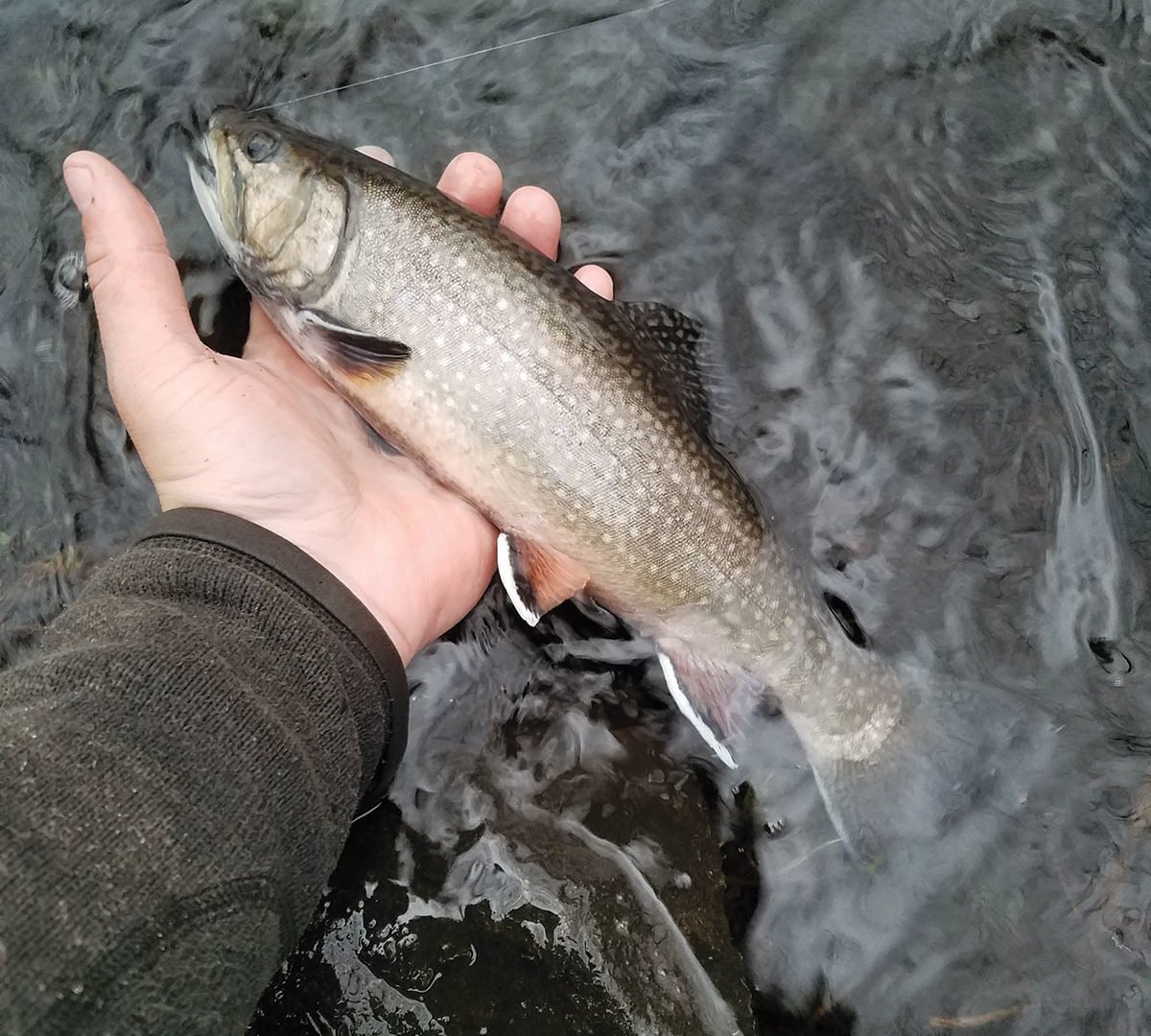
With a couple of months of wintery weather still ahead, there’s no better time than now to give tidal trout fishing a shot. If you do plan on keeping a fish or two for the table check the regulations before heading out, but I do always stress the importance of catch-and-release. Letting the majority of your catch go is a great way to ensure that there will always be a few trout around when the going gets tough. Also it’s important to note that on most waters any brook trout you come across must be released as there are no-kill regulations regarding this species. Brook trout are easily identified by the white markings on their fins, as well as worm like markings across their backs with some red dots haloed in blue across their sides. Brookies are often called the most beautiful fish to look at due to their vibrant colors and catching one is always considered a prize. This type of fishing is meant to be fun and, like I stated before, sometimes the scenery along a snow covered stream bank is worth the price of admission in itself.

